Weekly Reader: Welcoming the New Year
Happy New Year! In Judaism there are technically four new years, each for a different record-keeping purpose, and with the secular new year I guess that means we get five. It was also recently the official start of winter, and I imagine that many of you got to experience the brutal cold front that swept through much of the United States and Canada. So, to help keep us all occupied on these long winter evenings, here are some favorite winter and new year's-themed items from our archives. Happy reading, and keep warm!
—Ezra Glinter
New Year’s State of Mind
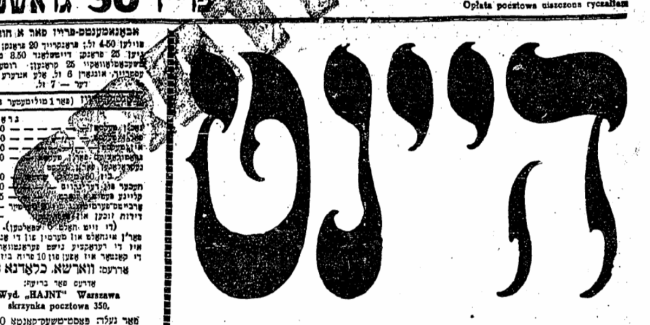
It’s long been my contention that either Christmas or New Year’s should be moved to the end of January or beginning of February to better spread out the winter holidays. That’s never going to happen, however, and the proximity of those two occasions creates a festive season with a strange religious and secular mix. This fact has been noted by Jews for a while, including in this piece by Arn Riklis, published in the Warsaw newspaper Haynt on January 3, 1936, and translated here by Ri J. Turner.
Read “A New Year’s State of Mind” by Arn Riklis
Listen to an episode of The Shmooze podcast with Ri J. Turner
Winter Words
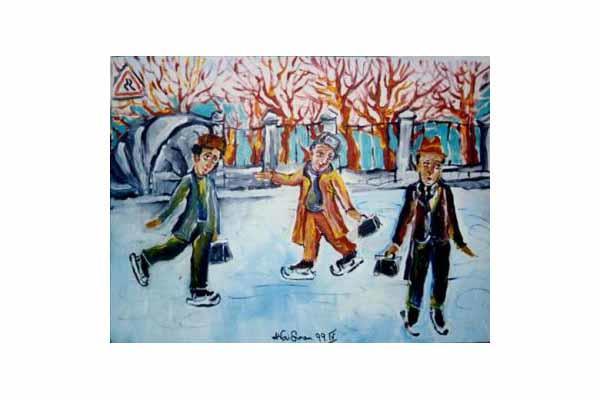
Do you need to brush up on your wintertime Yiddish skills? This worksheet features winter-themed sentences, but the words are in the wrong order. Click and drag the words into the correct order to test your Yiddish grammar.
A Night on the Train
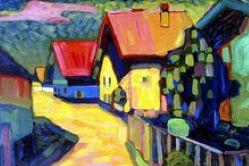
In the 1920s Yiddish writer Melech Ravitch was at the heart of Warsaw’s Jewish literary scene, but like other authors in the metropolis, he didn’t stay put. Rather, he would travel all over Poland to give lectures in smaller Jewish communities yearning for a taste of big city culture. In this excerpt from his autobiography, translated by Helen Mintz, he describes one such journey, taken in the dead of winter and the dead of night.
Gevalt in our Stars
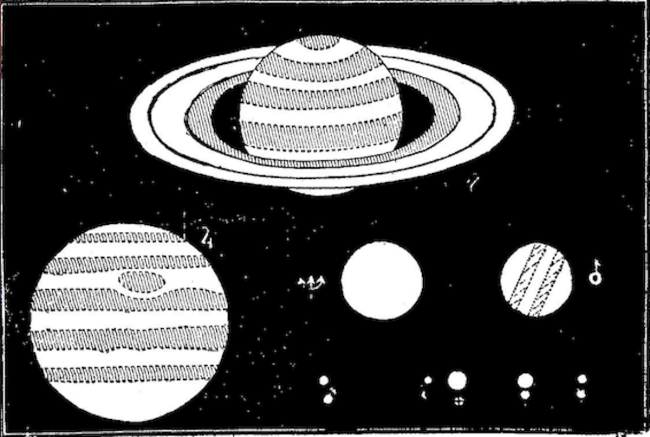
The arrival of the winter solstice and the turning over of the calendar year may move some minds to the practice of astrology. The idea of attaching one’s luck and fate to the movements of the cosmos is nothing new; early records from around the world show widespread acceptance of the heavenly bodies as authorities on earthly affairs. In Jewish culture, too, this belief was pervasive, and it’s no surprise that there’s a fair bit of Yiddish writing on the subject. In this essay, Sadie Gold-Shapiro describes their search through the literature for a Yiddish take on astrology—and what they eventually found.
New Year, New Almanac
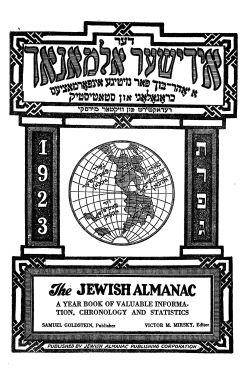
Almanacs are somewhat out of fashion these days. Maybe it’s because most of us no longer lead agrarian lifestyles, which once relied on the information an almanac provided. Or maybe it’s because all of that information is now available on the internet, rather than in a hefty tome. But these annual publications were once a necessity, and if you imagine that they also appeared in Yiddish, you would be right. You can find plenty of Yiddish almanacs in our collection, but here’s one from exactly one hundred years ago: The Jewish Almanac: A Year Book of Valuable Information, Chronology, and Statistics, by Victor Mirsky, published by the Jewish Almanac Publishing Corp in 1923.
